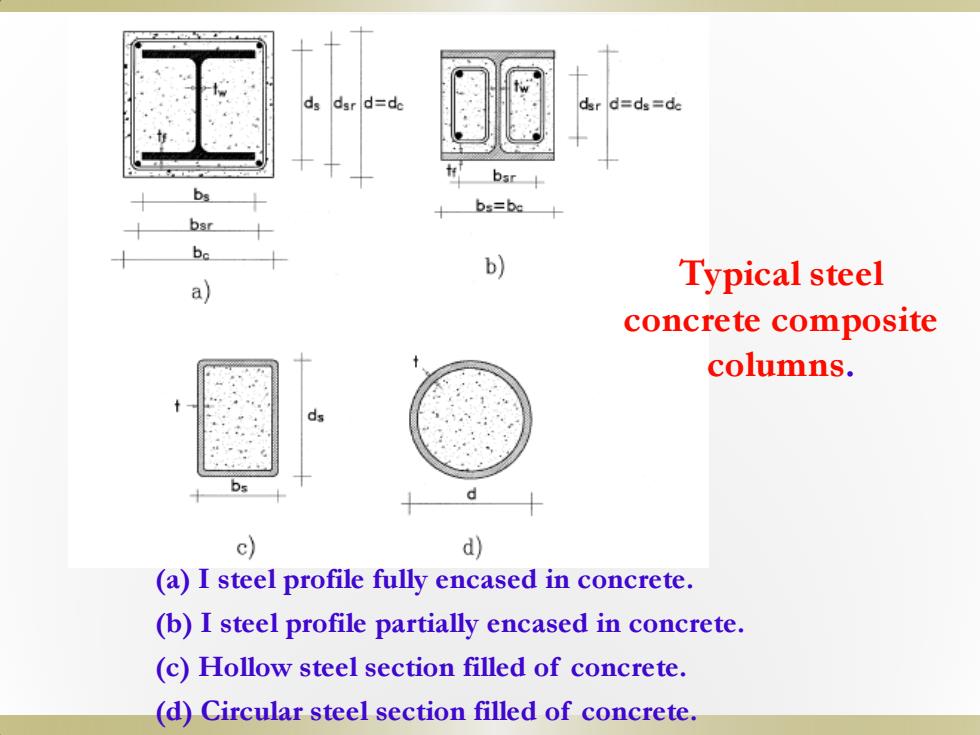
dar d=c d=ds=do bs=bo Typical steel concrete composite columns. c) d) (a)I steel profile fully encased in concrete. (b)I steel profile partially encased in concrete. (c)Hollow steel section filled of concrete. (d)Circular steel section filled of concrete
(a) I steel profile fully encased in concrete. (b) I steel profile partially encased in concrete. (c) Hollow steel section filled of concrete. (d) Circular steel section filled of concrete. Typical steel concrete composite columns
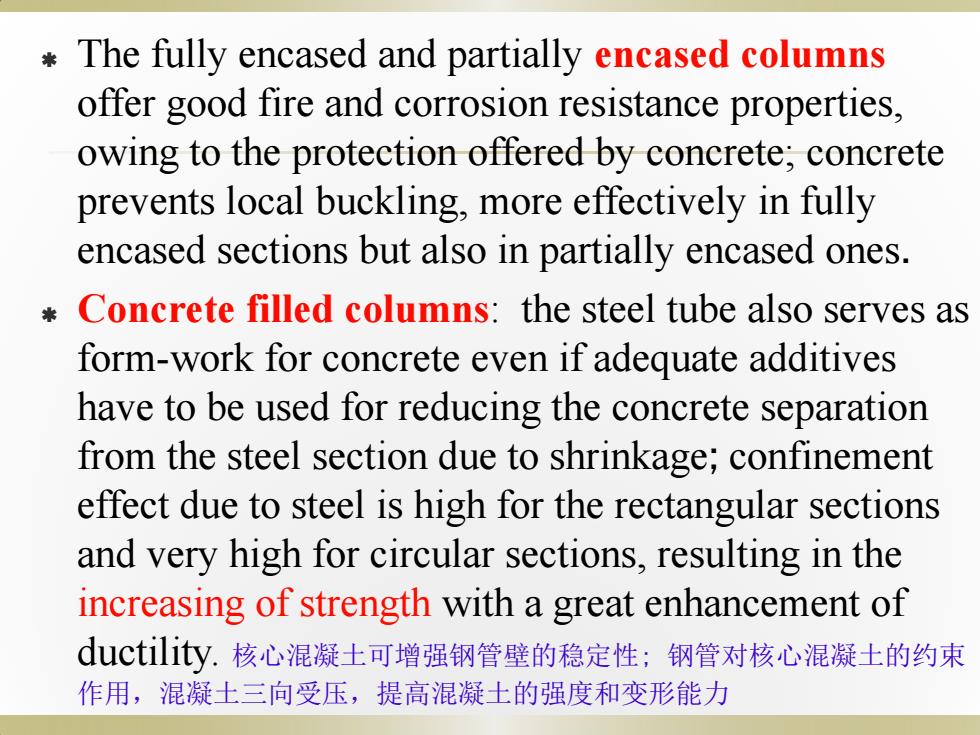
The fully encased and partially encased columns offer good fire and corrosion resistance properties, owing to the protection offered by concrete;concrete prevents local buckling,more effectively in fully encased sections but also in partially encased ones. Concrete filled columns:the steel tube also serves as form-work for concrete even if adequate additives have to be used for reducing the concrete separation from the steel section due to shrinkage;confinement effect due to steel is high for the rectangular sections and very high for circular sections,resulting in the increasing of strength with a great enhancement of ductility.核心混凝土可增强钢管壁的稳定性;钢管对核心混凝土的约束 作用,混凝土三向受压,提高混凝土的强度和变形能力
The fully encased and partially encased columns offer good fire and corrosion resistance properties, owing to the protection offered by concrete; concrete prevents local buckling, more effectively in fully encased sections but also in partially encased ones. Concrete filled columns: the steel tube also serves as form-work for concrete even if adequate additives have to be used for reducing the concrete separation from the steel section due to shrinkage; confinement effect due to steel is high for the rectangular sections and very high for circular sections, resulting in the increasing of strength with a great enhancement of ductility. 核心混凝土可增强钢管壁的稳定性; 钢管对核心混凝土的约束 作用,混凝土三向受压,提高混凝土的强度和变形能力
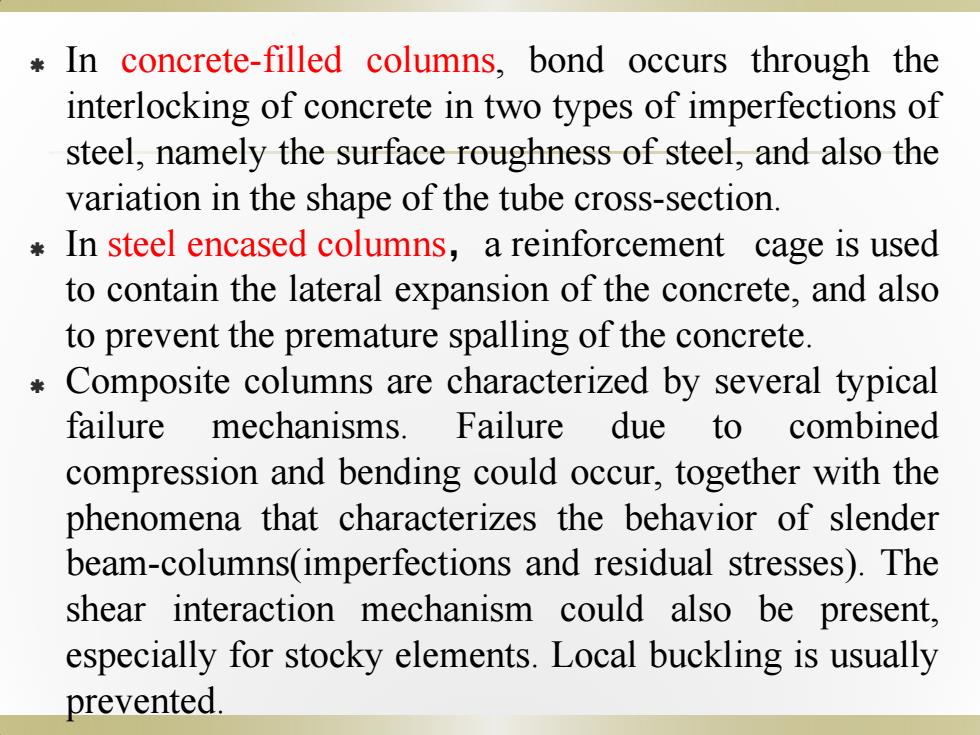
In concrete-filled columns,bond occurs through the interlocking of concrete in two types of imperfections of steel,namely the surface roughness of steel,and also the variation in the shape of the tube cross-section. In steel encased columns,a reinforcement cage is used to contain the lateral expansion of the concrete,and also to prevent the premature spalling of the concrete. Composite columns are characterized by several typical failure mechanisms.Failure due to combined compression and bending could occur,together with the phenomena that characterizes the behavior of slender beam-columns(imperfections and residual stresses).The shear interaction mechanism could also be present, especially for stocky elements.Local buckling is usually prevented
In concrete-filled columns, bond occurs through the interlocking of concrete in two types of imperfections of steel, namely the surface roughness of steel, and also the variation in the shape of the tube cross-section. In steel encased columns,a reinforcement cage is used to contain the lateral expansion of the concrete, and also to prevent the premature spalling of the concrete. Composite columns are characterized by several typical failure mechanisms. Failure due to combined compression and bending could occur, together with the phenomena that characterizes the behavior of slender beam-columns(imperfections and residual stresses). The shear interaction mechanism could also be present, especially for stocky elements. Local buckling is usually prevented
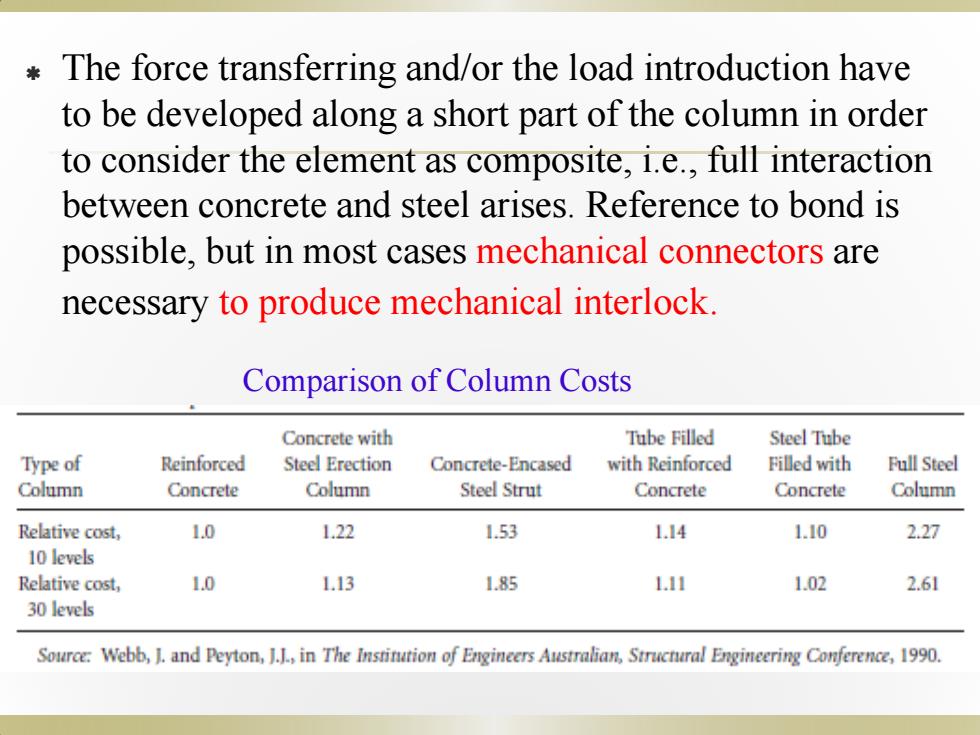
The force transferring and/or the load introduction have to be developed along a short part of the column in order to consider the element as composite,i.e.,full interaction between concrete and steel arises.Reference to bond is possible,but in most cases mechanical connectors are necessary to produce mechanical interlock. Comparison of Column Costs Concrete with Tube Filled Steel Tube Type of Reinforced Steel Erection Concrete-Encased with Reinforced Filled with Full Steel Column Concrete Column Steel Strut Concrete Concrete Column Relative cost, 1.0 1.22 1.53 1.14 1.10 2.27 10levels Relative cost, 1.0 L.13 1.85 111 1.02 2.61 30 levels Source:Webb,1.and Peyton,1.J,in The Instintion of Engineers Australian,Structural Engineering Conference,1990
The force transferring and/or the load introduction have to be developed along a short part of the column in order to consider the element as composite, i.e., full interaction between concrete and steel arises. Reference to bond is possible, but in most cases mechanical connectors are necessary to produce mechanical interlock. Comparison of Column Costs
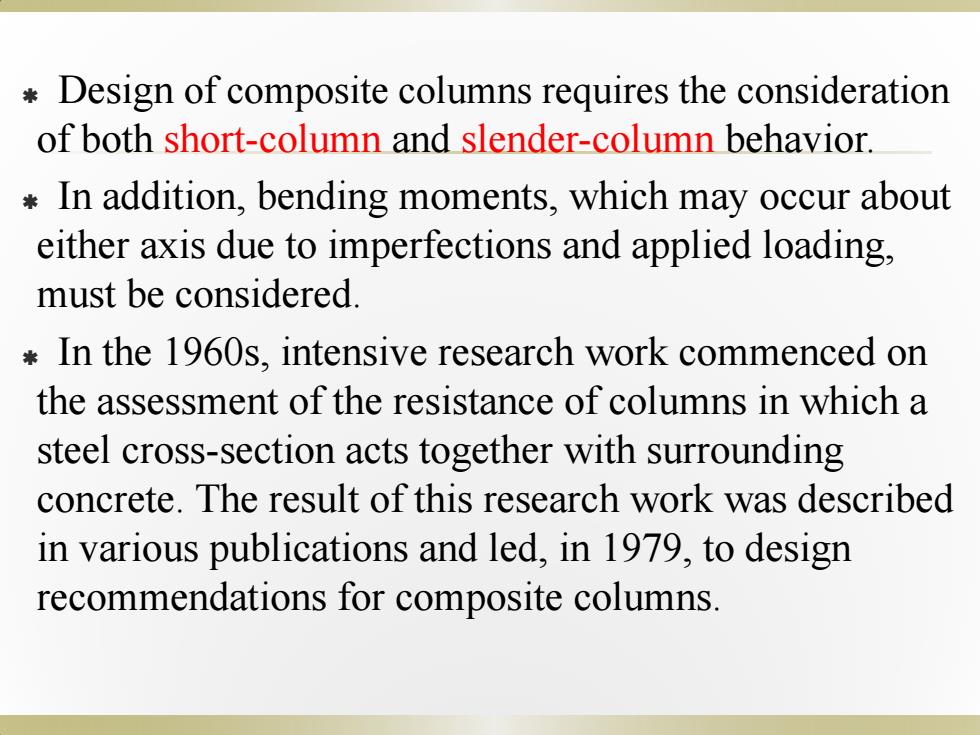
Design of composite columns requires the consideration of both short-column and slender-column behavior. In addition,bending moments,which may occur about either axis due to imperfections and applied loading, must be considered. In the 1960s,intensive research work commenced on the assessment of the resistance of columns in which a steel cross-section acts together with surrounding concrete.The result of this research work was described in various publications and led,in 1979,to design recommendations for composite columns
Design of composite columns requires the consideration of both short-column and slender-column behavior. In addition, bending moments, which may occur about either axis due to imperfections and applied loading, must be considered. In the 1960s, intensive research work commenced on the assessment of the resistance of columns in which a steel cross-section acts together with surrounding concrete. The result of this research work was described in various publications and led, in 1979, to design recommendations for composite columns